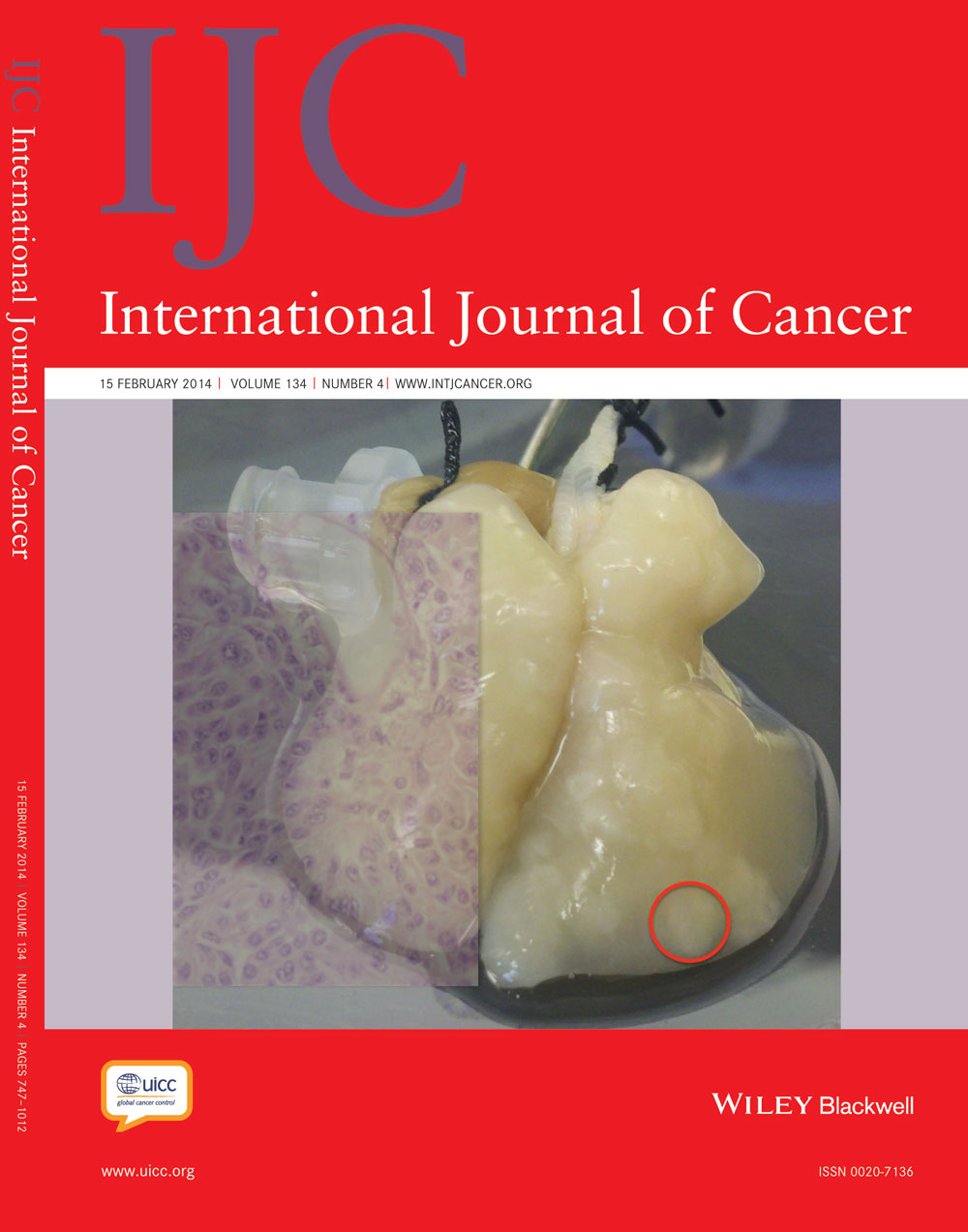Endometrial thickness and risk of breast and endometrial carcinomas in the prostate, lung, colorectal and ovarian cancer screening trial
This article is a U.S. Government work, and, as such, is in the public domain in the United States of America.
Abstract
Postmenopausal women with higher circulating estrogen levels are at increased risk of developing breast and endometrial carcinomas. In the endometrium, excess estrogen relative to progesterone produces a net proliferative stimulus, which may result in endometrial thickening. Therefore, the hypothesis that endometrial thickness is a biological marker of excess estrogen stimulation that is associated with risk of breast and endometrial carcinomas was tested. Endometrial thickness was measured in 1,272 postmenopausal women, aged 55–74 years, who underwent transvaginal ultrasound (TVU) screening as part of the Prostate, Lung, Colorectal and Ovarian Cancer Screening Trial. Serial endometrial thickness measurements were available for a subset of women at 1 year (n = 1,018), 2 years (n = 869) and 3 years (n = 641) after baseline. The associations between endometrial thickness and breast (n = 91) and endometrial (n = 14) carcinoma were evaluated by estimating relative risks (RRs) and 95% confidence intervals (CIs) using Cox proportional hazards regression with age as the time metric. Models incorporating baseline endometrial thickness and as a time-varying covariate using all measurements were examined. Median follow-up among study participants was 12.5 years (range: 0.3–13.8 years). Compared to baseline endometrial thickness of 1.0–2.99 mm, women with baseline endometrial thickness greater than or equal to 5.0 mm had an increased risk of breast (RR = 2.00, 95% CI = 1.15–3.48) and endometrial (RR = 5.02, 95% CI = 0.96–26.36) carcinomas in models adjusted for menopausal hormone use and BMI. These data suggest that increased endometrial thickness as assessed by TVU was associated with increased risk of breast and endometrial carcinomas.
Abstract
What's new?
Endometrial thickness is related to obesity and menopausal hormone use, factors associated with a higher incidence of breast and endometrial carcinomas. Given these associations, the authors of this study investigated whether endometrial thickness was independently associated with incident breast or endometrial carcinoma risk. In a cohort of 1,272 women, an endometrial thickness greater than five millimeters was associated with a two-fold increase in risk for breast carcinoma and a five-fold increase in risk for endometrial carcinoma.




